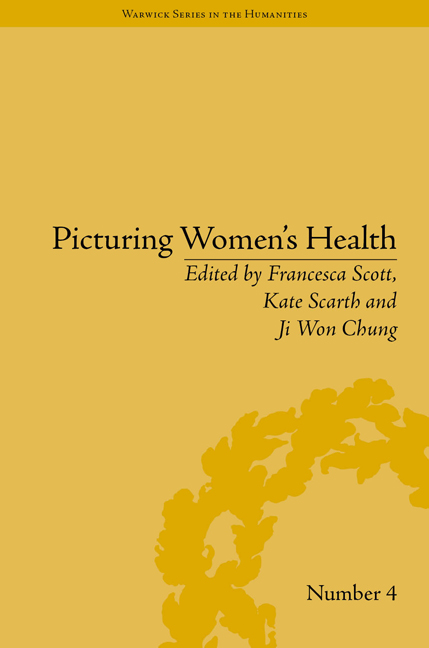Book contents
- Frontmatter
- CONTENTS
- Acknowledgements
- List of Contributors
- List of Figures
- Introduction: Picturing Women's Health
- 1 Sensibility and Good Health in Charlotte Smith's Ethelinde
- 2 Amazonian Fashions: Lady Delacour's (Re)Dress in Maria Edgeworth's Belinda
- 3 Transforming the Body Politic: Food Reform and Feminism in Nineteenth-Century Britain
- 4 Stagnation of Air and Mind: Picturing Trauma and Miasma in Charlotte Brontë's Villette
- 5 The Iconography of Anorexia Nervosa in the Long Nineteenth Century
- 6 Kate Marsden's Leper Project: On Sledge and Horseback with an Outcast Missionary Nurse
- 7 Constructs of Female Insanity at the Fin de Siècle: The Lawn Hospital, Lincoln, 1882–1902
- 8 The Fitness of the Female Medical Student, 1895–1910
- 9 Unstable Adolescence/Unstable Literature? Managing British Girls' Health around 1900
- NOTES
- Index
4 - Stagnation of Air and Mind: Picturing Trauma and Miasma in Charlotte Brontë's Villette
- Frontmatter
- CONTENTS
- Acknowledgements
- List of Contributors
- List of Figures
- Introduction: Picturing Women's Health
- 1 Sensibility and Good Health in Charlotte Smith's Ethelinde
- 2 Amazonian Fashions: Lady Delacour's (Re)Dress in Maria Edgeworth's Belinda
- 3 Transforming the Body Politic: Food Reform and Feminism in Nineteenth-Century Britain
- 4 Stagnation of Air and Mind: Picturing Trauma and Miasma in Charlotte Brontë's Villette
- 5 The Iconography of Anorexia Nervosa in the Long Nineteenth Century
- 6 Kate Marsden's Leper Project: On Sledge and Horseback with an Outcast Missionary Nurse
- 7 Constructs of Female Insanity at the Fin de Siècle: The Lawn Hospital, Lincoln, 1882–1902
- 8 The Fitness of the Female Medical Student, 1895–1910
- 9 Unstable Adolescence/Unstable Literature? Managing British Girls' Health around 1900
- NOTES
- Index
Summary
The pervasive influence of Dr Thomas John Graham's Modern Domestic Medicine (1826) in the Brontë household is well known. Patrick Brontë's copy includes extensive marginal annotations relating to his children's health complaints. Like her father, Charlotte took a definite lay interest in medicine, the pseudosciences and the developing field of psychology, and included doctors in her fiction as ‘friends offering crucial assistance and understanding’. In Villette (1853), the doctor all but replaces the priest in taking confession and endowing revelation intended to lift the spirits. Dr Thomas John Graham and the writers of similar early- to mid-nineteenth-century medical reference works in this way enter Brontë's text in a position of some esteem, through the aptly named fictional practitioner, Dr John Graham Bretton. Though Dr John ‘looks in and sees a chamber of torture’, however, he ‘can neither say nor do much’, an acknowledgement of the limitations of his ‘art’, and of the names and categories assigned in particular to female nervous sufferers. By first considering some of the difficulties experienced in picturing women's mental suffering by, variously, the self-reflexive author of fiction, the fictional ‘patient’ and the emblematic diagnostician, this chapter then investigates the way theories of miasma, in conjunction with representations of distempered air and storm, are used by Brontë to provide a channel through which images of traumatic disturbance could be explored, beyond the limiting diagnostic categories usually assigned to female sufferers.
Pictures of women in various states of health and decline proliferate in Villette: from the ‘pale dead nun’ painted ‘on a panel’, to the portrait of Cleopatra – ‘ugly’ because immodest in abundance ‘ open to female view in a public gallery.
- Type
- Chapter
- Information
- Picturing Women's Health , pp. 59 - 76Publisher: Pickering & ChattoFirst published in: 2014



